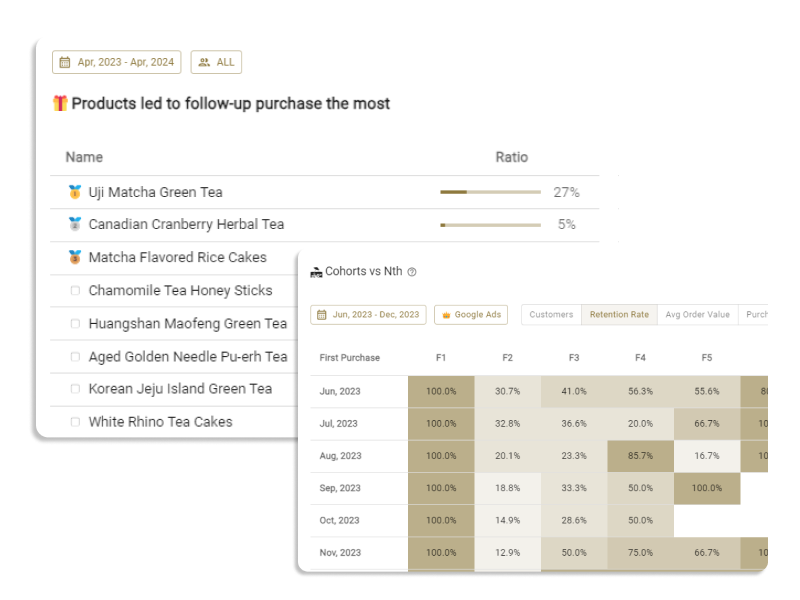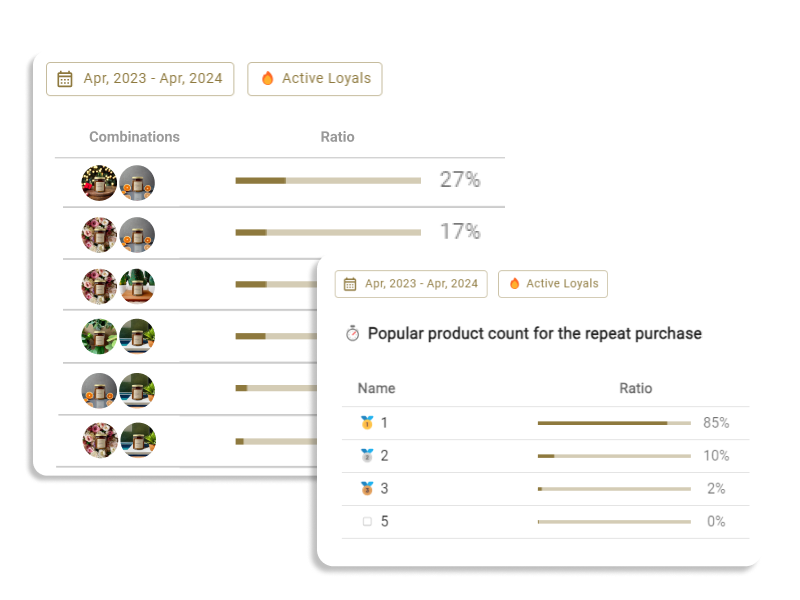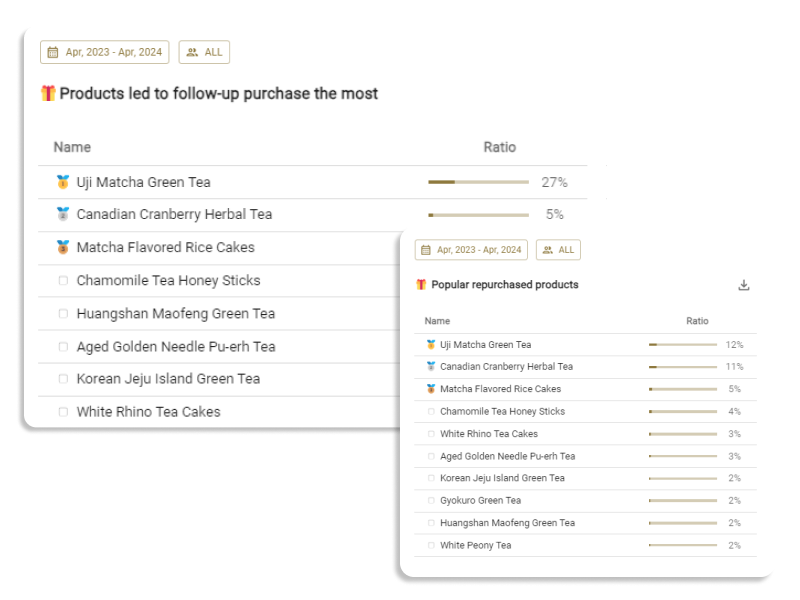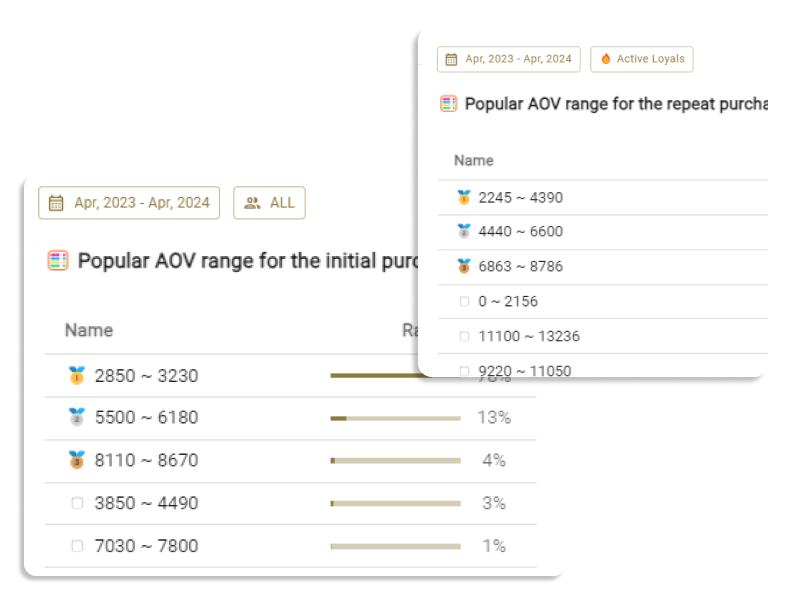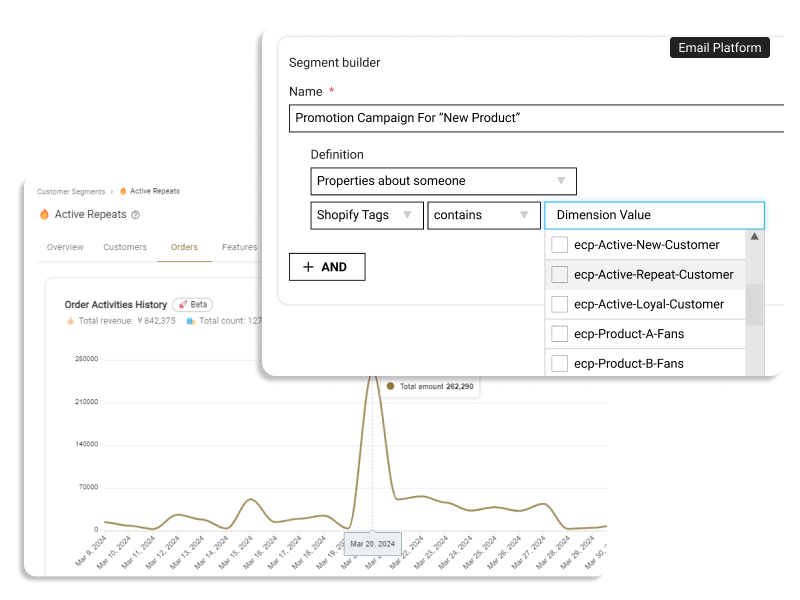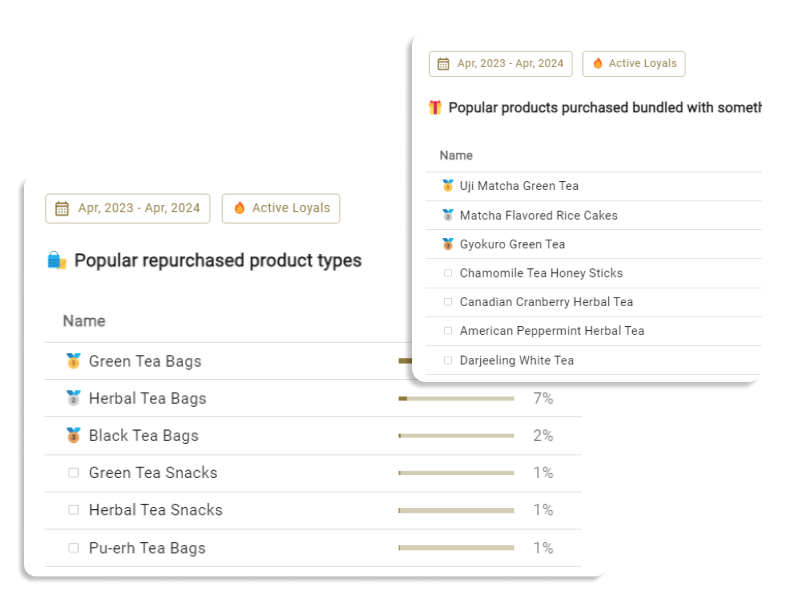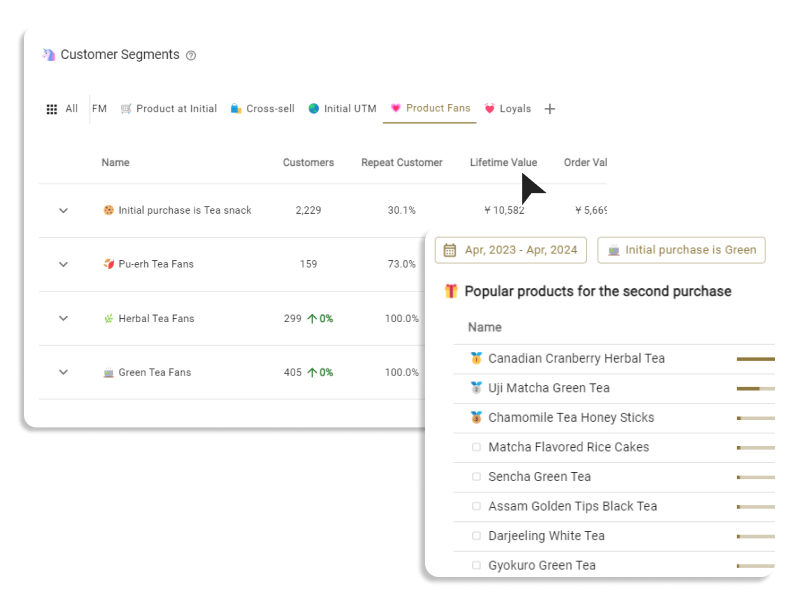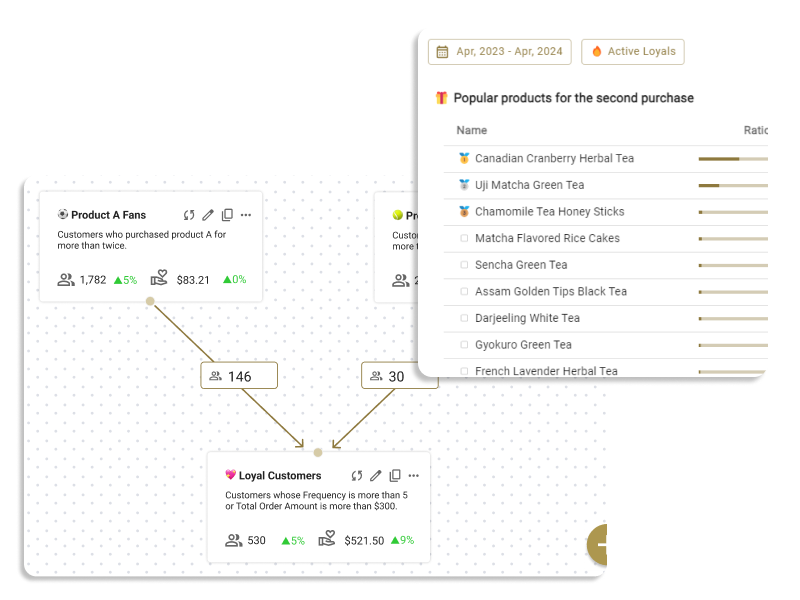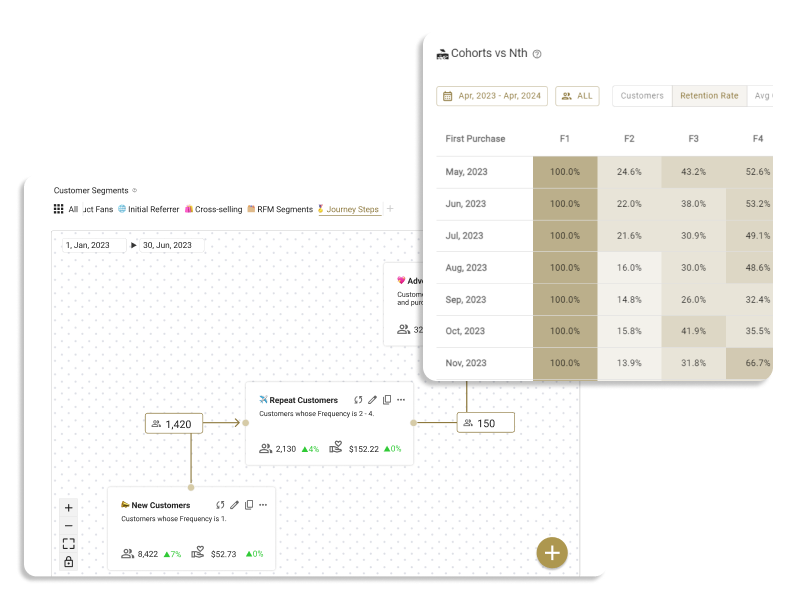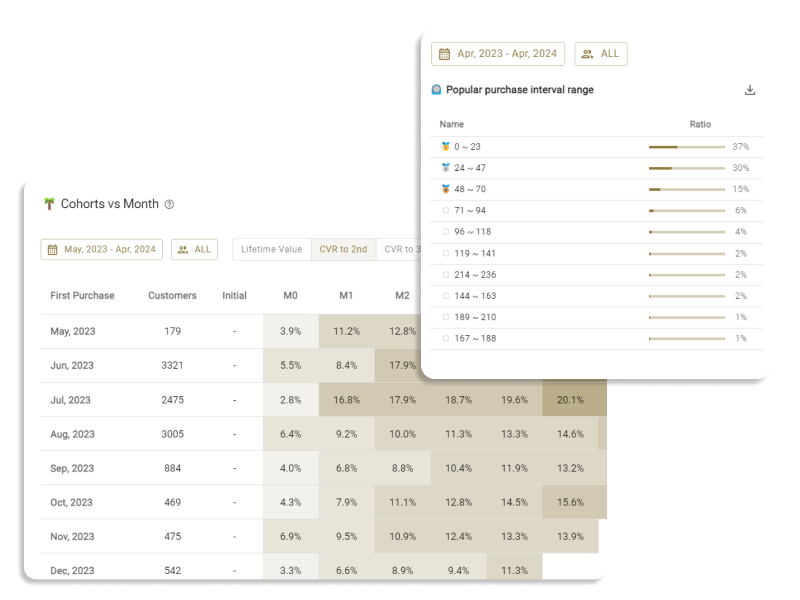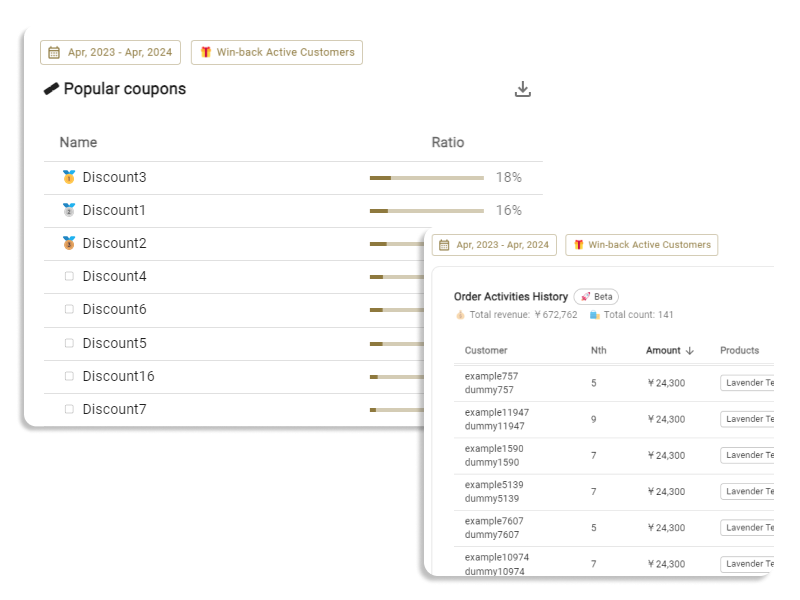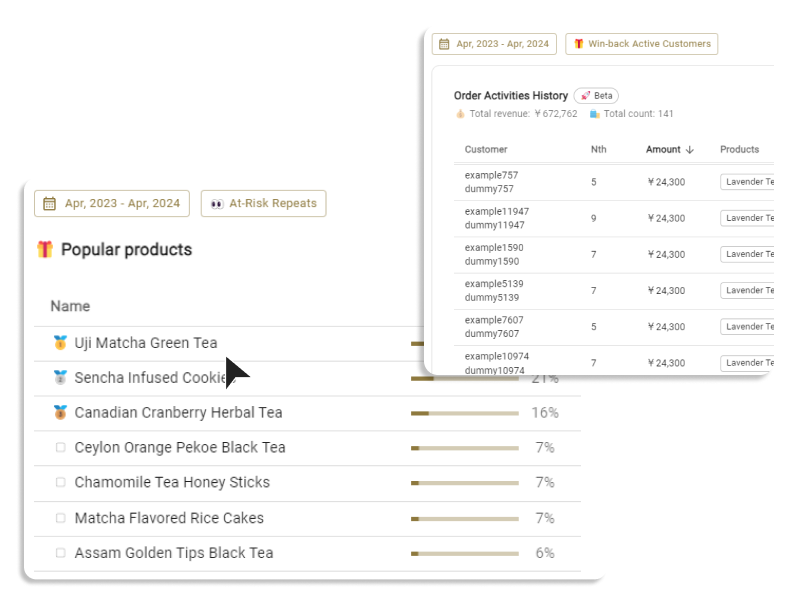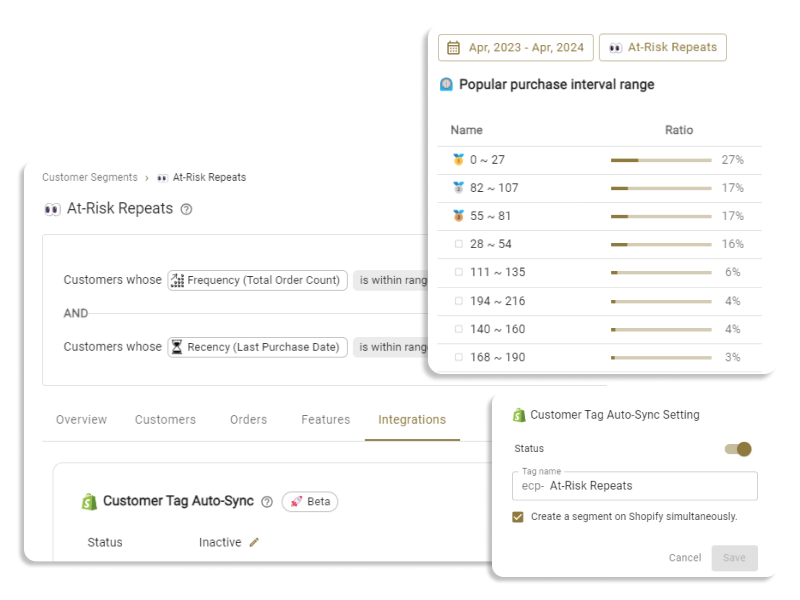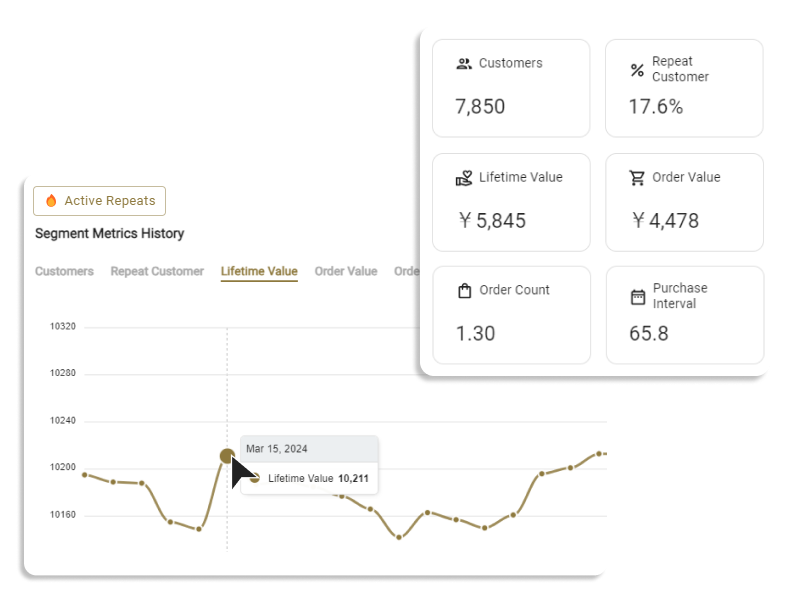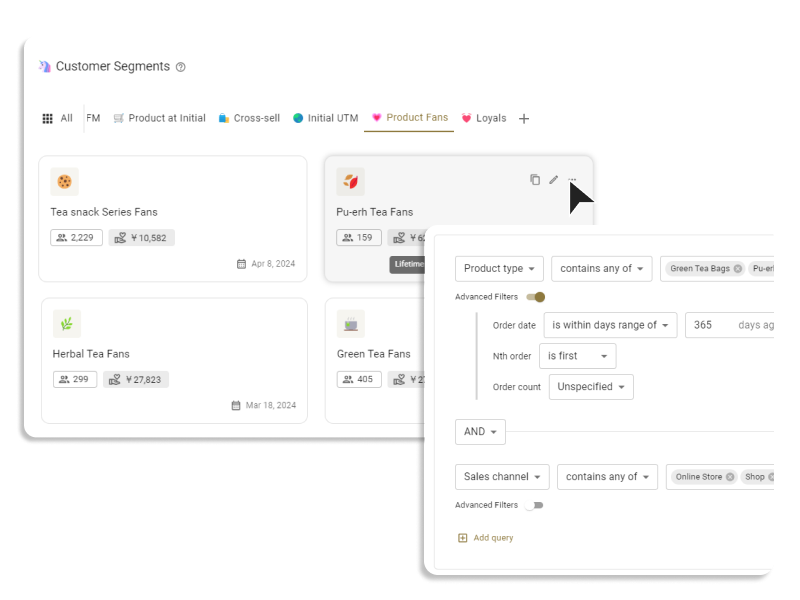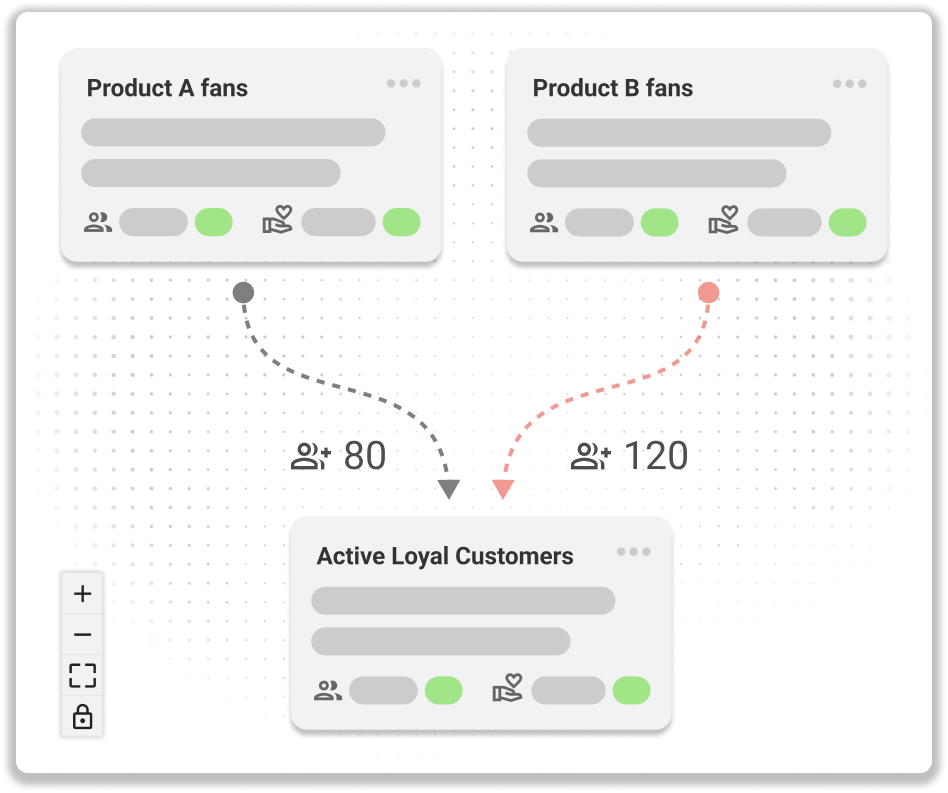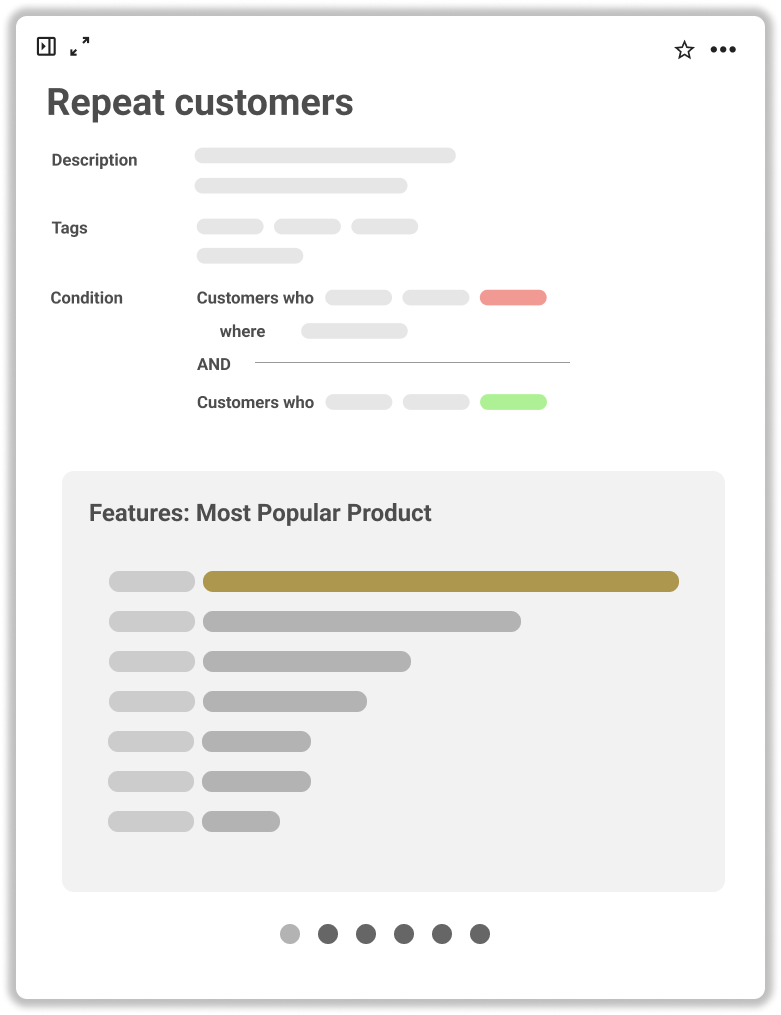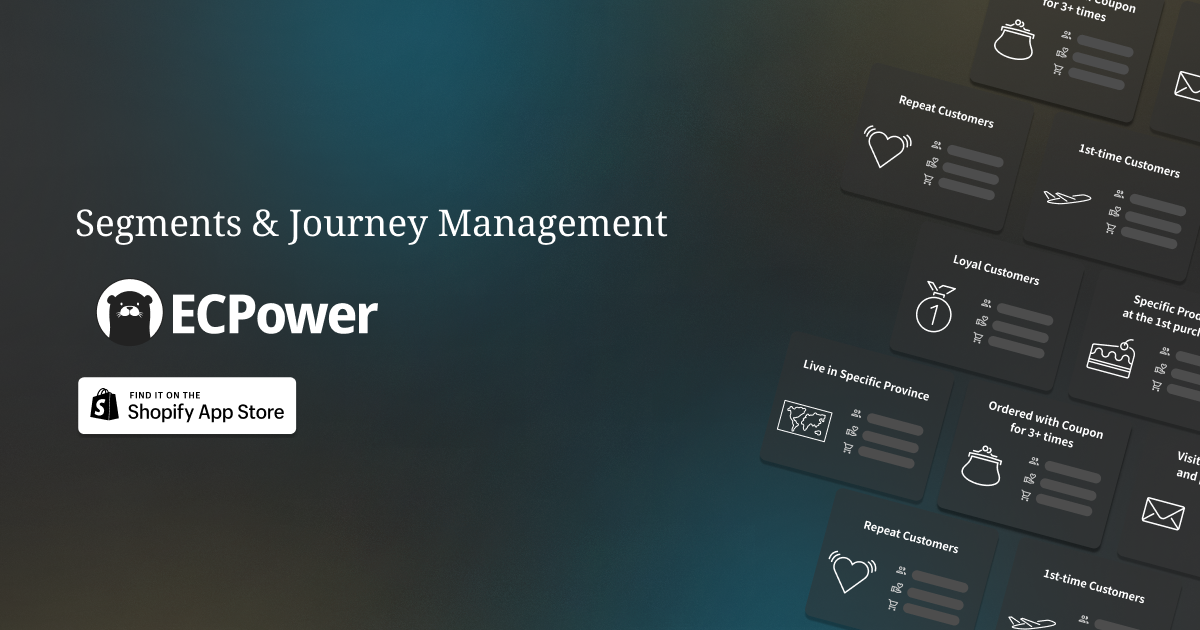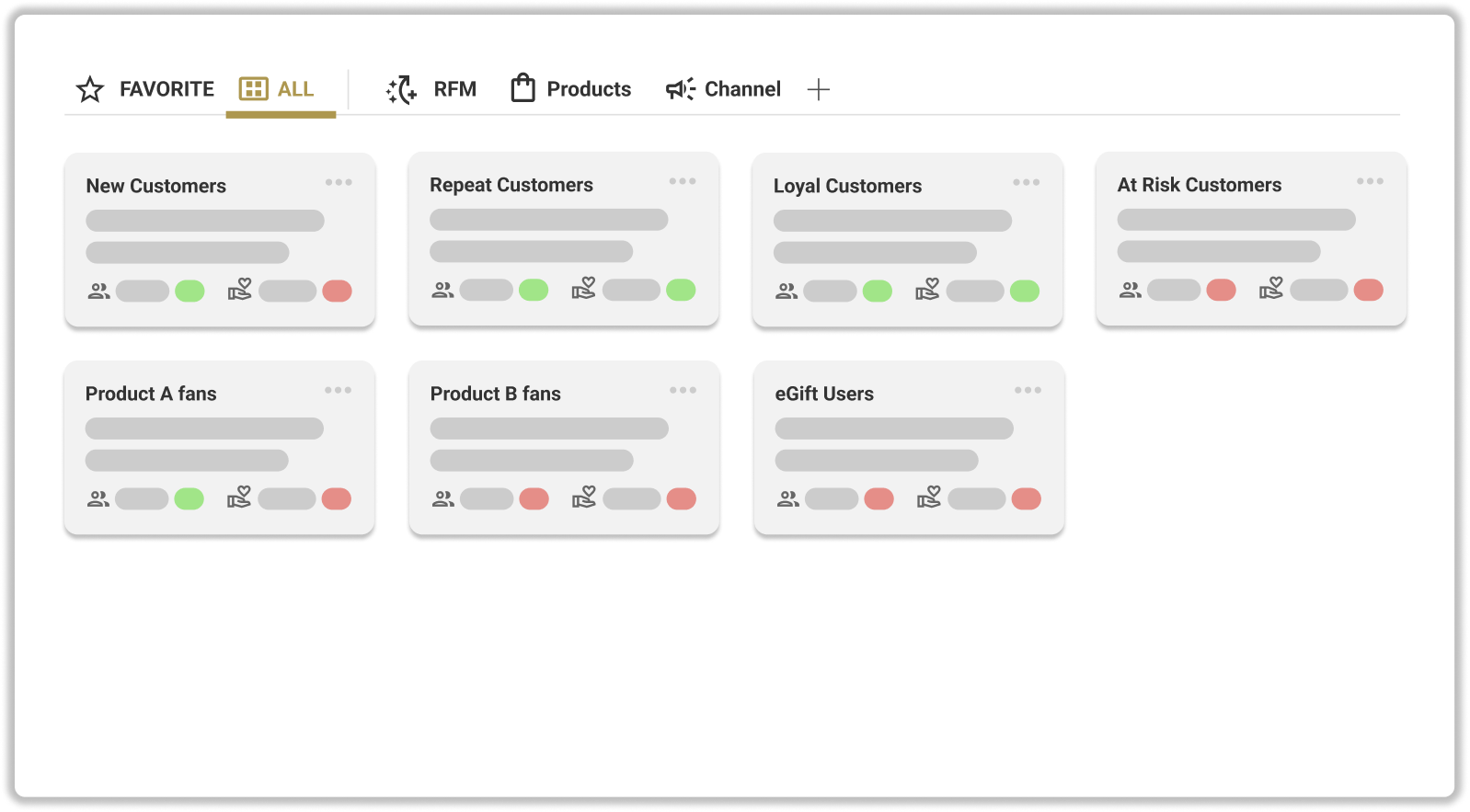In the dynamic world of eCommerce, understanding the timing of customer purchases—particularly the intervals between them—is crucial for maintaining engagement and maximizing retention. The 'Purchase Interval Distributions' report provides Shopify store owners with essential insights into the patterns of customer repurchases, helping to inform targeted marketing and communication strategies.
What's Purchase Interval and Its Definition
Purchase interval refers to the average number of days between purchases for repeat customers. This metric is central to RFM (Recency, Frequency, Monetary) analysis, which categorizes customers by how recently and frequently they've made purchases, as well as the monetary value of those purchases. By understanding purchase intervals, businesses can better determine when a customer is likely active or at risk of lapsing.
Detailed Insights from the "Purchase Interval Distributions" Report
Knowing the average value of purchase intervals is useful, but understanding their distribution is vital for pinpointing when customers typically repurchase. This insight helps in timing marketing efforts effectively, targeting customers precisely when they are most likely to buy again. Additionally, it assists in identifying customer segments that may need specific engagement strategies to boost retention, thereby optimizing your outreach and maximizing customer lifetime value.
⏱️ Popular Purchase Interval Range
This section of the report analyzes the distribution of purchase intervals among repeat customers. To ensure accuracy, the data is divided into deciles after excluding the top and bottom 5% to prevent outlier influence. Each interval bucket is ranked by the frequency of customers it contains, providing a clear picture of common repurchase timings. The share ratio, highlighting the proportion of repeat customers in each segment, offers additional insight into customer retention.
Note: One-time buyers are not included in this report because they only have a single purchase, which means we can't calculate a span between purchases to determine their purchase interval. Essentially, without a second purchase, there's no way to measure, so their data is considered non-applicable and excluded from this analysis.
Why 'Purchase Interval' Insights Matter
- Segment-Specific Purchase Cycles: Different customer segments exhibit unique buying cycles. Knowing the distribution of purchase intervals helps determine the optimal times for communication, avoiding the risk of engaging customers too early or too late in their buying cycle.
- Risk Assessment in RFM Analysis: In RFM analysis, defining the appropriate threshold for when a customer becomes "at-risk" is crucial. Insights from purchase intervals allow businesses to set more accurate thresholds based on when the likelihood of a repurchase begins to decline.
- Enhancing Lifetime Value: Shortening the purchase interval within targeted customer segments can significantly increase the Average Order Count, thereby improving the overall Lifetime Value of the customer. This is a key strategy for focused marketing efforts aimed at boosting customer retention and engagement.
Use Cases - Recommended Segments Filters
- Targeted Segment: Utilize insights from the latest purchase interval to fine-tune when you should approach customers. Adding a condition based on the days since their last order allows for more precise targeting, ensuring your communications are timely and relevant.
- Repeat or Loyal Customer Segments: Analyze patterns from your most loyal customers to understand the average number of days they return to make another purchase. Learning from successful customer behaviors can help replicate these strategies across other segments to enhance retention.
The 'Purchase Interval Distributions' report is an invaluable resource for any Shopify store looking to optimize its customer engagement and retention strategies. By understanding the typical intervals between purchases, you can better align your marketing efforts with customer behaviors, ensuring that communications are well-timed and effective. Leveraging these insights can lead to increased customer loyalty, higher repeat purchase rates, and ultimately, greater success for your store.


